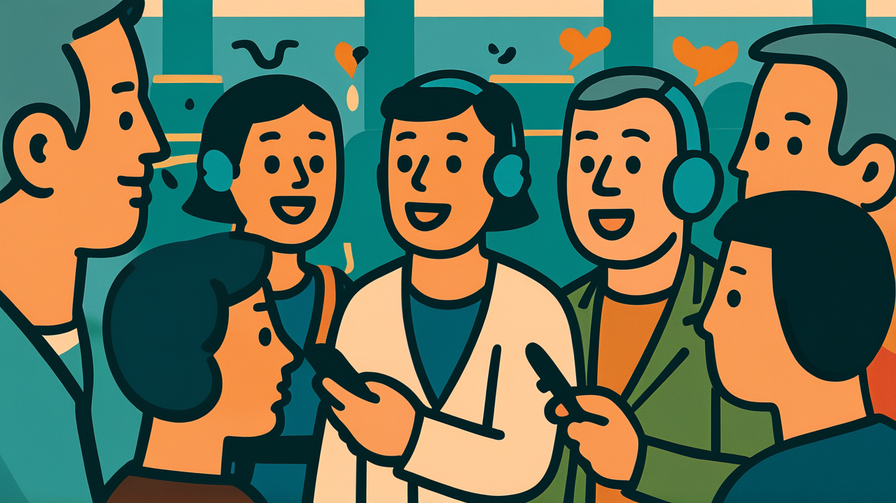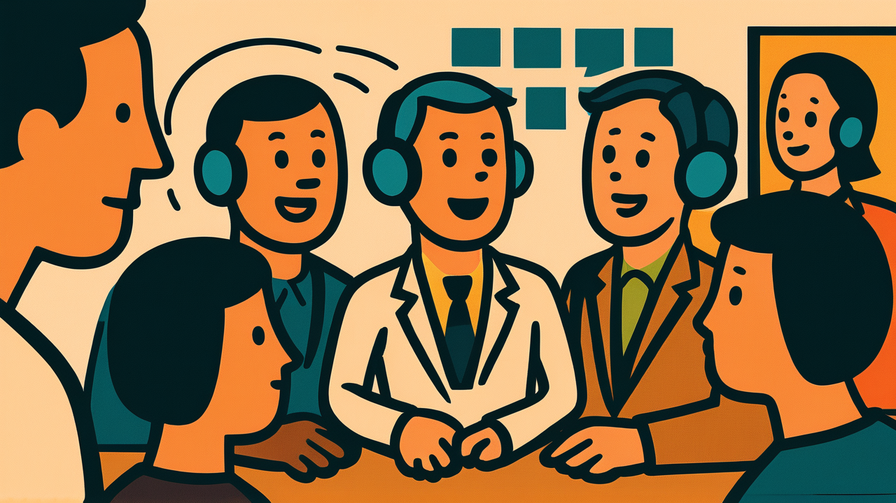[Disclaimer] This article is reconstructed based on information from external sources. Please verify the original source before referring to this content.
News Summary
The following content was published online. A translated summary is presented below. See the source for details.
Google Research has developed innovative sound localization technology that makes group conversations more accessible, particularly for people with hearing difficulties. This technology uses artificial intelligence to separate different speakers’ voices in crowded environments, similar to how our brains naturally focus on one person talking at a noisy party – a phenomenon called the “cocktail party effect.” The system employs multiple microphones and advanced algorithms to determine where sounds originate and enhance speech from specific directions while reducing background noise. This breakthrough could revolutionize hearing aids, video conferencing, and smartphone accessibility features. Early tests show the technology can improve speech understanding in noisy environments by up to 40%, helping the 466 million people worldwide with hearing loss. The system works in real-time, making it practical for everyday use in restaurants, classrooms, and social gatherings where traditional hearing aids struggle.
Source: Google Research Blog
Our Commentary
Background and Context

Hearing in noisy environments challenges everyone, but it’s especially difficult for people with hearing loss or conditions like auditory processing disorder. Traditional hearing aids amplify all sounds equally, making background noise louder along with speech. This creates a frustrating experience where users hear more sound but understand less conversation.
The “cocktail party problem” has puzzled scientists for decades – how does the human brain filter out unwanted noise to focus on a single speaker? Our brains use subtle cues like timing differences between our ears, visual information from lip reading, and familiarity with voices. Replicating this ability in technology requires sophisticated artificial intelligence.
Expert Analysis
Sound localization technology represents a convergence of multiple fields: acoustic engineering, machine learning, and neuroscience. The system uses “beamforming” – creating a focused “beam” of attention toward specific sound sources while suppressing others. Think of it like an acoustic spotlight that illuminates only the person you want to hear.
What makes Google’s approach innovative is combining spatial audio processing with AI that can identify and track individual speakers even as they move. The system learns to distinguish between speech and noise patterns, improving its performance over time. This adaptive capability means the technology gets better at helping each individual user.
Additional Data and Fact Reinforcement
Hearing difficulties affect people of all ages. One in eight Americans aged 12 or older has hearing loss in both ears, and the number doubles every decade of life. Among teenagers, 17% show signs of noise-induced hearing loss, often from loud music through headphones. The World Health Organization predicts 900 million people will have disabling hearing loss by 2050.
Current hearing aids cost $1,000-$6,000 per ear and many insurance plans don’t cover them. If sound localization technology can be integrated into smartphones and affordable earbuds, it could democratize hearing assistance for millions who can’t afford traditional solutions.
Related News
Major tech companies are racing to improve audio accessibility. Apple introduced “Conversation Boost” for AirPods Pro, using beamforming to enhance face-to-face conversations. Meta is developing AR glasses that could provide visual cues about who’s speaking. Microsoft Teams uses AI to separate speakers in video calls.
The FDA recently approved over-the-counter hearing aids, making basic devices available without prescriptions. This regulatory change, combined with advancing technology, could transform hearing assistance from expensive medical devices to accessible consumer electronics.
Summary

Google’s sound localization technology represents a breakthrough in making conversations accessible to everyone. By using AI to replicate the brain’s natural ability to focus on specific speakers, this innovation could help millions participate more fully in social, educational, and work settings. As this technology becomes integrated into everyday devices, it promises to break down communication barriers and create a more inclusive world.
Public Reaction
People with hearing loss express excitement about technology that could help them enjoy restaurants and parties again. Teachers see potential for helping students with auditory processing challenges succeed in noisy classrooms. Privacy advocates raise concerns about devices that can isolate and record specific conversations. Audio engineers praise the technical achievement while noting challenges in different acoustic environments.
Frequently Asked Questions
Q: How is this different from regular hearing aids?
A: Traditional hearing aids amplify all sounds. This technology selectively enhances speech from specific directions while reducing other noise, making conversations clearer.
Q: When will this be available?
A: Some features are already in high-end earbuds and phones. Widespread availability in affordable devices is expected within 2-3 years.
Q: Can this help people without hearing loss?
A: Yes! Anyone who struggles in noisy environments – restaurants, concerts, or video calls – could benefit from clearer, more focused audio.


